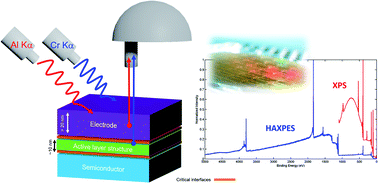New directions in the analysis of buried interfaces for device technology by hard X-ray photoemission
Abstract
Photoelectron spectroscopy is a characterization technique which plays a key role in device technology, a field requiring, very often, a reliable and reproducible analysis of buried, critical interfaces. The recent advent of laboratory hard X-ray spectrometers opens new perspectives toward routine studies of technologically-relevant samples for the qualification of processes and materials. In this review, the status of hard X-ray photoelectron spectroscopy (HAXPES) implemented with chromium Kα excitation (5.414 keV) and applied to technological research in nanoelectronics is presented. After an account of the role of synchrotron HAXPES and the specific effects to care about at the practical level, different aspects are developed, first for illustrating the benefits of the technique through specific application cases in the field of resistive memories and power transistors. Then, we provide a status update on quantification in HAXPES, both from core-level intensities and inelastic background analysis. Finally, we present preliminary results in a novel analytical field, operando HAXPES, where a prototypical device is operated in situ during the laboratory HAXPES experiment, opening up the possibility of unravelling the mechanisms occurring at buried interfaces and governing device operation.

- This article is part of the themed collection: Photoelectron spectroscopy and the future of surface analysis


 Please wait while we load your content...
Please wait while we load your content...